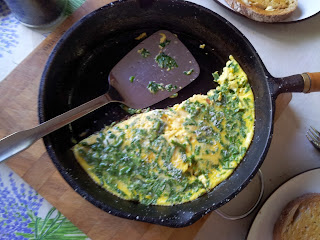Our first edible garden
The veggie garden began as one 2.4m x 2.4m raised garden bed using old railway sleepers to contain layers of newspaper, compost, cow manure and sugar cane straw. We used
Esther Dean's No Dig Gardening method as our guide. We quickly learnt that 'No Dig' is not quite an accurate description of the process - not for our situation anyway. In addition to this bed we currently have a 3 smaller beds and two of a similar size.
We live on bushland and the veggie garden is on a rock platform with shallow soil. All the beds are raised about 30 cm. The beds do not receive sun all day and are exposed to the westerly winds. Despite this we are happy with what we produce.

Many gardening experts say that vegetable gardening is a fairly no fuss and easy pastime. Don't believe them! It is enjoyable and satisfying and educational but it is also hard physical work at times and requires regular attention to get the most out of it. One missed day of vigilance and the caterpillars of the dainty white cabbage moth can strip the broccoli of its leaves. One failure to see a small hole in the wire netting can mean a brigade of possums instigate a night time raid on the tomatoes. One evening of not watering the newly planted spinach seedlings will see them wilt and perish. In our experience most vegetables are very needy and demand your loving undivided attention.
Using spaces in the rest of the yard for growing food
As well as our vegetable garden we grow a lot of edible plants around our house - such as the chilli. We have 4 different types. The one in the picture I know as Thai chilli. It has fruit that is white, orange, purple and red.
Growing tips: chillies
The chilli seems to be tough little plant.
1. try growing them against a brick wall which retains heat - ours get morning sun only
2. they seem to tolerate pretty poor quality soil but like good drainage
3. they readily self seed and are easily transplanted when about 10cm high
4. protect them from possums - our local possums eat the leaves, flowers and hot fruit - we put discarded bird cages over the plants so the possums get whatever grows outside the cage and we get the rest.
Now - what to do with an abundance of chillies?








